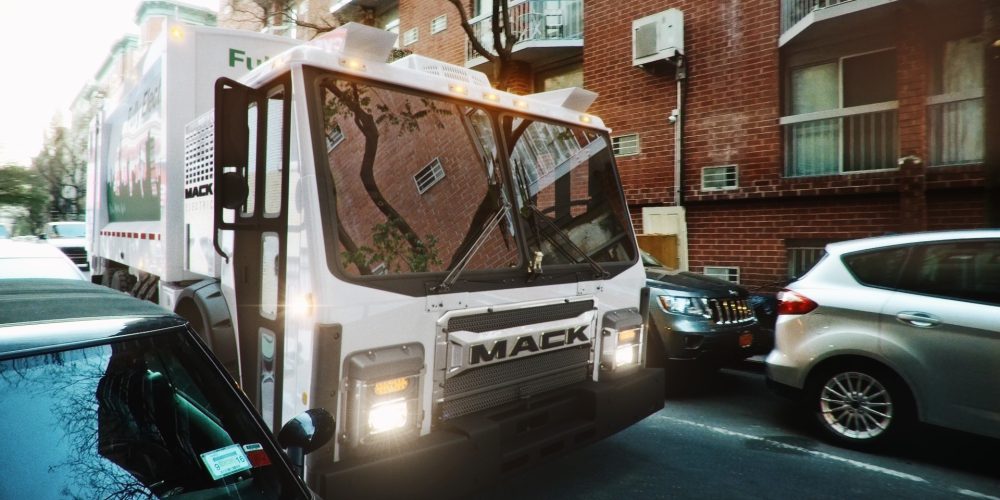A new study from the US Department of Energy’s (DOE) Argonne National Laboratory offers the most comprehensive results yet of the costs of owning and operating different types of vehicles and how costs vary by powertrain.
The study is titled “Comprehensive Total Cost of Ownership Quantification for Vehicles with Different Size Classes and Powertrains.”
Argonne, Lawrence Berkeley National Laboratory, National Renewable Energy Laboratory, Oak Ridge National Laboratory, and Sandia National Laboratories collaborated on the study.
Factors considered
The researchers considered the following in order to calculate the total cost of ownership:
- Vehicle purchase cost
- Depreciation
- Financing and fuel costs
- Costs related to insurance (new)
- Maintenance and repair (new)
- Taxes and fees (new)

The report covers the following vehicles:
- Light-duty passenger vehicles: compact and midsize sedans, small and large sport utility vehicles, and pickup trucks
- Medium- and heavy-duty commercial vehicles: semi-tractors; medium-duty vans and pickups; transit buses; box, utility aerial, and dump trucks; garbage trucks.
It also looked at the following powertrains:
- Internal combustion engine
- Hybrid electric vehicle
- Plug-in hybrid electric vehicle
- Fuel cell electric vehicle
- Battery electric vehicle
Study findings (electric vehicles in bold)
The study found that the maintenance costs of battery electric vehicles are 40% lower than ICE vehicles.
Overall, hybrid electric vehicles currently tend to be the lowest-cost powertrain. However, battery electric vehicles will reach cost parity as battery prices drop, and hydrogen-powered fuel-cell electric vehicles will reach cost parity with conventional vehicles as the price of hydrogen drops.
David Gohlke, an energy and environmental analyst at Argonne and coauthor of the study, said:
There is uncertainty with how quickly these costs will drop, but the technology is trending in the right direction.
Other findings of note include the following, according to the Argonne National Laboratory (and electric vehicle findings are in bold):
Other findings of note include that cars depreciate faster than light trucks, and that older electric vehicles have a greater depreciation rate than newer electric vehicles.
Light-duty vehicle insurance costs are comparable for different powertrains, and vehicle size and vocation both affect incurred costs for medium/heavy-duty commercial vehicle insurance.
Light-duty vehicle taxes and fees are comparable across powertrain types and size classes, though marginally higher registration fees exist for alternative fuel vehicles in many states.
Many electric tractor trailers would be affected by additional battery weight, reducing the available payload capacity, and this cost can be substantial.
Electric vehicle charging for commercial vehicles can be time-consuming; if this charging is paid at an hourly rate, labor can cause this cost to dominate total cost of ownership.
Long-haul battery electric vehicle semi-tractors, which are the most expensive today due to their large batteries, will become the least expensive powertrain in 2035 as battery prices continue to drop.
For local delivery vehicles such as the Class 4 truck, the battery electric vehicle is the lowest cost option in 2025, the baseline year for the study’s modeling.
Read more: Longest-range electric vehicles (EVs) you can buy in 2021
Subscribe to Electrek on YouTube for exclusive videos and subscribe to the podcast.

purchase lasuna without prescription – purchase diarex generic himcolin where to buy
besivance brand – buy carbocysteine for sale buy generic sildamax for sale
buy generic benemid over the counter – buy probalan without prescription order generic carbamazepine 400mg
order celecoxib 200mg online – urispas cheap indomethacin 50mg without prescription
cheap mebeverine 135mg – pletal 100mg cost pletal generic
voltaren for sale online – oral voltaren 100mg buy aspirin medication
pyridostigmine 60mg usa – pyridostigmine 60 mg price buy generic azathioprine for sale
rumalaya price – cheap generic rumalaya buy amitriptyline 10mg online cheap
buy baclofen 25mg generic – baclofen 25mg usa feldene 20 mg cheap
how to buy diclofenac – buy imdur 20mg for sale cheap generic nimotop
periactin tablet – buy tizanidine 2mg online zanaflex price
order meloxicam online cheap – order mobic 15mg online cheap buy cheap generic ketorolac
cefdinir 300mg uk – how to get clindamycin without a prescription buy clindamycin
buy generic trihexyphenidyl over the counter – purchase emulgel for sale where can i order emulgel
prednisone 10mg tablet – deltasone 5mg us elimite for sale online
buy acticin generic – retin gel uk retin for sale
betnovate over the counter – buy generic betamethasone monobenzone cost
metronidazole 400mg ca – order cenforce generic cenforce online
buy cozaar sale – buy losartan 25mg online order cephalexin 125mg pills
cleocin 150mg drug – cleocin 150mg usa cheap indocin 75mg
modafinil 200mg pills – provigil for sale buy cheap meloset
eurax online – eurax over the counter buy generic aczone for sale
brand zyban – ayurslim for sale online buy generic shuddha guggulu
order capecitabine 500mg without prescription – danocrine pills purchase danazol without prescription
buy prometrium online – progesterone order online buy fertomid
norethindrone brand – careprost brand purchase yasmin sale
estrace 1mg cost – buy ginette 35 generic anastrozole 1 mg price
generic dostinex 0.25mg – cheap alesse purchase alesse generic
гѓ—гѓ¬гѓ‰гѓ‹гѓійЂљиІ©гЃЉгЃ™гЃ™г‚Ѓ – гѓ—гѓ¬гѓ‰гѓ‹гѓійЂљиІ©гЃЉгЃ™гЃ™г‚Ѓ г‚ёг‚№гѓгѓћгѓѓг‚ЇйЂљиІ©
гѓ—гѓ¬гѓ‰гѓ‹гѓі жµ·е¤–йЂљиІ© – гѓ‰г‚г‚·г‚µг‚¤г‚ЇгѓЄгѓійЊ 100 mg еј·гЃ• г‚ўг‚ュテイン йЈІгЃїж–№